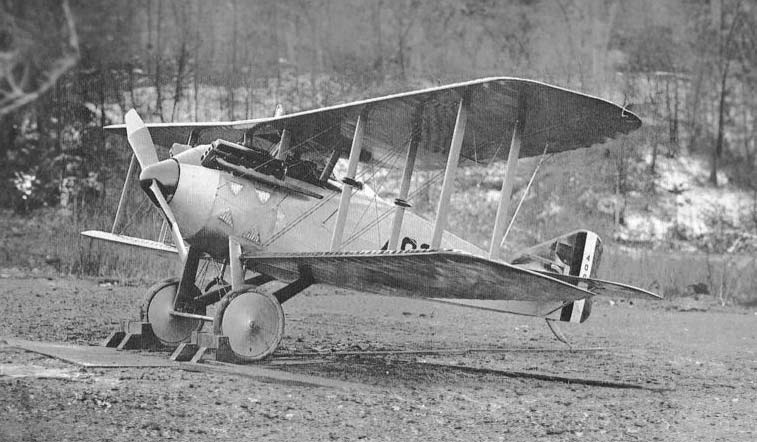“Thomas-Morse MB-3, quintessential American WWI fighter, known for robustness and reliability in service.” This article delves into the Thomas-Morse MB-3, an American fighter aircraft pivotal in the transition between the World Wars. It covers its development, design, performance, military service, and historical significance.
The Thomas-Morse MB-3 was an American biplane fighter that marked a significant development in early U.S. military aviation. Designed in the post-World War I era, it played a crucial role in the evolution of U.S. fighter aircraft.
History of the development of the Thomas-Morse MB-3
In the wake of World War I, the United States found itself with a need to modernize its air force. The majority of its military aircraft had been either imported from allies or were of designs that did not meet the emerging post-war requirements. The Thomas-Morse Aircraft Corporation, which had previously produced training aircraft for the U.S. Army, recognized this need and began developing a new fighter to solidify the U.S. position in military aviation.
Launched by the Thomas-Morse Aircraft Corporation, the MB-3 was developed to provide the U.S. Army with a domestically-produced, advanced fighter aircraft. It was designed by B. Douglas Thomas, a notable aviation engineer of the time. The MB-3 was seen as a stepping stone towards an independent and modern U.S. aerial fighting force.
Design of the Thomas-Morse MB-3:
The Thomas-Morse MB-3 was a single-seat, single-engine biplane with a conventional design typical of the era. Its construction involved a wooden frame with fabric covering, a method favored for its balance of strength and lightness. It had a wingspan of 26 feet (7.92 meters) and a length of 20 feet 1 inch (6.12 meters), with equal-span wings that provided it with good maneuverability and climb rate.
The aircraft was equipped with a standard tail-dragger landing gear, which was fixed and non-retractable, a design choice dictated by the technological limitations of the period. The open cockpit situated the pilot high in the fuselage, offering good visibility, which was essential for dogfighting.
One of the main advantages of the MB-3 was its straightforward design, which made it robust and relatively easy to repair—essential qualities for an aircraft expected to endure the rigors of pilot training and the potential of combat. However, it faced drawbacks such as limited speed and agility when compared to the increasingly advanced aircraft designs emerging in Europe.

Performance of the Thomas-Morse MB-3:
The MB-3 was powered by a Wright-Hispano E V-8 engine, capable of producing 300 horsepower, a considerable output at the time. This propelled the aircraft to a maximum speed of 122 mph (196 km/h) and gave it a service ceiling of 18,700 feet (5,700 meters). Its range was approximately 350 miles (563 kilometers), adequate for the short-range reconnaissance and combat missions of the period.
When evaluated against contemporaries such as the French SPAD S.XIII and the British Sopwith Camel, the MB-3 was not the fastest nor the most agile, but it held its own in terms of durability and ease of maintenance. Its power-to-weight ratio and structural integrity were commendable for a domestic U.S. design of the time.
Military use and combat of the Thomas-Morse MB-3:
The Thomas-Morse MB-3’s primary role in the U.S. Army was as an advanced trainer and pursuit aircraft. It was armed with two .30 cal (7.62 mm) Vickers machine guns, a standard armament for fighters of that period. While the MB-3 saw no combat, as it entered service after WWI, it was crucial in training a generation of U.S. military pilots.
The MB-3 was not exported to other countries, nor did it see service outside the United States. It was eventually replaced by more advanced designs such as the Boeing P-12. The last of the MB-3s were withdrawn from service in the late 1920s, marking the end of their operational life.
The Thomas-Morse MB-3 holds a notable place in the annals of American aviation history. It represented a significant effort by the U.S. to establish itself as a creator of capable military aircraft and not just a consumer. The MB-3 set the standard for reliability and serviceability that would be foundational for the development of future American fighter aircraft.
Back to the Warbirds section.